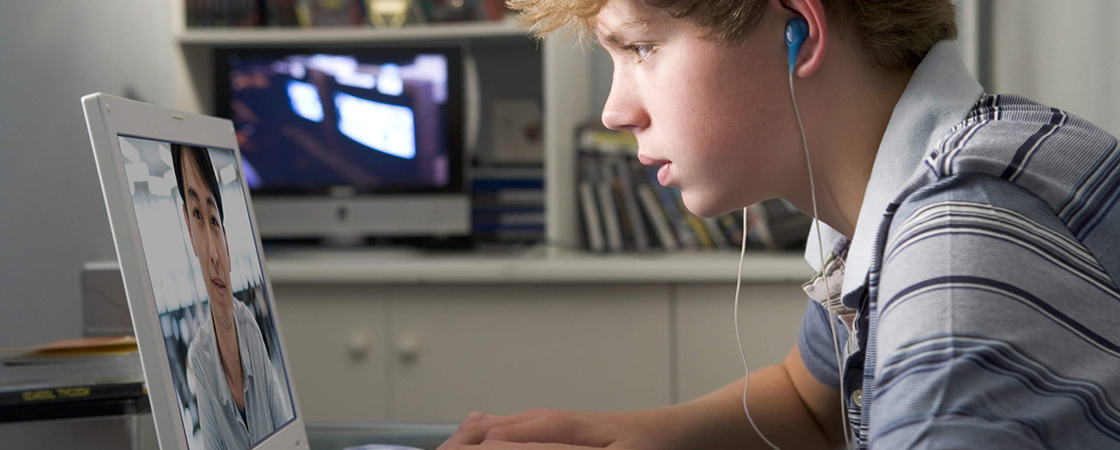The national health crisis has forced the hands of most academic institutions to transition from teaching students in traditional brick and mortar classrooms to moving classes online, essentially overnight. Each academic establishment needed to promptly make this shift in rapid succession, and some have thrived while others have floundered. Parents from various schools and districts are comparing notes on their children’s academic experiences and the reviews are mixed. Student experiences are vastly different, with varying levels of engagement.
In a short amount of time, two distinct approaches have emerged: online learning and virtual instruction.
Online Learning
Online learning uses web-based tools and platforms which allow teachers to simply post resources and assignments online for students to navigate and complete independently. This method involves a self-driven, asynchronous approach to exploring content, in which the student is solely responsible for traversing the coursework individually.
Virtual Instruction
Virtual instruction involves a live teacher who provides instruction in real-time, thus allowing for discussion, clarification, and pivoting from the original lesson plan to best meet the needs of the learner. Virtual instruction most typically uses a video conferencing platform and allows for a teacher to deliver lesson plans much as they would in a traditional classroom setting. Students can ask questions, garner needed clarity, and interact with academic content instantaneously with the support of a teacher.
An Assessment of Online Learning
Online learning is efficient, and it allows students to continue course work in the absence of being able to be present in a physical classroom. Resources related to content can be easily linked by teachers and accessed by students so that they are able to learn independently. Students are able to move at their own pace, and this approach helps to promote literacy related to web-based tools, resources, and supplemental content. Given the high level of independence this method requires, online learning promotes self-sufficiency and self-reliance.
Online learning presents a fair number of challenges. First and foremost, in this model, relatively little instruction or teaching is provided by teachers in real-time, or even via virtual recordings. This can lead to a frustrating learning experience characterized by a lack of support for a student who is struggling to understand new concepts or skills. Additionally, technological challenges abound, especially given that the student learning and management systems commonly being used for online learning were not intended to be utilized as a primary platform. They were not designed to handle the volume of students using the forums simultaneously, which has led to overwhelming system failures and outages across the country.
Furthermore, this arrangement has required many parents to become home-school teachers without an instructional repertoire, or adequate understanding of some of the academic content all while they are often attempting to simultaneously work from home. Socialization with peers is also fundamentally absent from an online learning experience, which can lead to an isolating experience for a student. Ultimately, student engagement, connectedness to teachers, and engagement with content can be lacking when a student is interfacing with an online learning model.
An Assessment of Virtual Instruction
Virtual instruction allows for a partnership between a teacher and student, a journey through a course that allows for exploring content in a way that is dynamic and fluid. Utilizing virtual learning allows for a comprehensive experience that is aligned and responsive to a student’s strengths, needs, interests, and learning styles. Countless studies have confirmed the significance of the teacher-student connection as it relates to student engagement, and ultimately achievement. Simply said, virtual learning is relational, and when students feel connected to their teachers, they tend to thrive. While attending school virtually, students can continue to interact with their peers, work in groups, and maintain a social experience. Virtual learning also allows for teachers to provide social and emotional support to their students during these very trying times.
Furthermore, the familiarity of seeing the face of a trusted teacher, delivering a live lesson virtually, can provide much-needed comfort to students. The levels of engagement, support, and understanding provided by a virtual instruction model mirrors face-to-face instruction in a traditional classroom. While most teachers and students alike look forward to being together in the classroom again, virtual instruction is truly the next best thing to being together in person.
As with any approach that utilizes technology, glitches can occur. Fortunately, given that virtual instruction occurs in real-time, teachers are often able to offer support in the moment and ultimately reduce frustration and lost instructional time. As we all adjust to our new daily routines, the amount of screen time we encounter each day is elevated. When students engage in virtual learning, it is important that they build in time for breaks, exercise, and other activities that allow them opportunities to venture away from their computer screens.
Clearly, these are unprecedented and uncertain times, which can be stressful for students and teachers alike. Virtual instruction brings some normalcy to these untenable days and allows us to mitigate some of the stress by supporting the academic, social, and emotional needs of our students. Until we can be together in classrooms again, virtual instruction allows educators to remain united with their students in a time when they need that connection the most.








